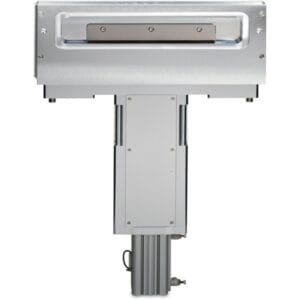ISO-K HV Single Clamps: Versatile Fastening Solution for ISO-K and ISO-F High-Vacuum Flanges
ISO-K HV Single Clamps are reliable, multipurpose clamping components designed for use in high-vacuum (HV) systems utilizing ISO-K and ISO-F flanges. Engineered for compatibility with ISO-standard centering rings and o-rings, these clamps enable secure, leak-tight flange connections across a variety of vacuum plumbing configurations.
Unlike ISO-K double clamps—which are specifically for ISO-K to ISO-K mating—ISO-K HV Single Clamps are designed for universal use between ISO-K and ISO-F flanges, making them ideal for hybrid systems where both quick-clamp and bolt-style interfaces are present. They are essential for securing flange joints in foreline plumbing, high-vacuum chamber ports, instrumentation lines, and modular vacuum subsystems.
Constructed from lightweight aluminum, these single clamps offer a balance of mechanical strength and corrosion resistance. The aluminum body ensures easy handling and installation without introducing unnecessary weight into the system—particularly valuable in overhead or mobile vacuum assemblies.
Key Features of ISO-K HV Single Clamps:
Universal ISO Flange Compatibility
Designed for mating ISO-K to ISO-K, ISO-F to ISO-F, or ISO-K to ISO-F flanges using standard centering rings and o-rings.Durable, Lightweight Construction
Made from high-quality aluminum for strength, corrosion resistance, and low mass—ideal for cleanroom or reconfigurable setups.Vacuum Integrity
When paired with appropriate elastomeric o-rings, ISO-K HV Single Clamps support vacuum sealing performance down to 10⁻⁸ Torr, depending on system configuration and cleanliness.Tool-Friendly Design
These clamps can be installed and removed quickly using common hand tools, making them ideal for maintenance-accessible systems or frequently serviced components.
TFM offers ISO-K HV Single Clamps in standard ISO sizes including ISO63, ISO100, ISO160, ISO200, ISO250, and ISO320, with precision machining to ensure proper flange alignment and uniform o-ring compression. Each clamp is compatible with TFM’s full range of ISO centering rings, seals, and ISO flanges.
For higher-strength applications or corrosive environments, TFM also provides ISO-K HV Double Clamps in cold steel and aluminum variants. Custom solutions such as anodized finishes, laser-marked part numbers, or oversized hand knobs are available upon request.
In summary, ISO-K HV Single Clamps offer a flexible, ISO-compliant solution for connecting flanges in high-vacuum environments. Their versatility, material reliability, and ease of use make them indispensable across scientific, industrial, and OEM vacuum platforms.
Ordering Table
| Flange OD | Reference | Material | Thread Size | Part Number |
| ISO63-ISO100 | Single Clamps (imperial) | Aluminum | 5/16-18 | QF-SSC-ALI |
| ISO63-ISO100 | Single Clamps (metric) | Aluminum | M8 X 1.25P | QF-SSC-ALM |
| ISO63-ISO100 | Single Clamps (metric) | Zinc Plated Steel | M8 X 1.25P | QF-SSC-CSM |
| ISO63-ISO100 | Single Clamps (metric) | Zinc Plated Steel | M8 X 1.25P | QF-SSC-CSM-S |
| ISO160-ISO250 | Single Clamps (imperial) | Aluminum | 5/16-18 | QF-SSC-ALJ |
| ISO160-ISO250 | Single Clamps (metric) | Aluminum | M10 X 1.5P | QF-MSC-ALM |
| ISO320 | Single Clamps (imperial) | Aluminum | 7/16-14 | QF-SSC-ALL |
| ISO320 | Single Clamps (metric) | Aluminum | M12 X 1.75P | QF-PSC-ALM |
| ISO400-ISO500 | Single Clamps (imperial) | Aluminum | 7/16-14 | QF-SSC-ALK |
| ISO400-ISO500 | Single Clamps (metric) | Aluminum | M12 X 1.75P | QF-LSC-ALM |
| ISO630 | Single Clamps (metric)* Claw made from steel | Zinc Plated Steel | M12 X 1.75P | QF-XSC-SLM |





Reviews
There are no reviews yet.